Don't wanna be here? Send us removal request.
Text
References
Anderson, H.C. HANS ANDERSON’S BEST FAIRY TALES Foulsham’s Boy and Girl Fiction Library, London W. Foulsham & Co LTD Book Production War Economy Standard. The Rose Elf pp. 54 – 60
Anderson, H.C. The Rose Elf Available at: https://andersen.sdu.dk/vaerk/hersholt/TheRoseElf_e.html (Accessed 24.03.2021)
Angove, M. Michael Angove Design. Available at: http://www.michaelangove.com/about-michael-angove/ (Accessed 12.04.2021)
Angove, M. Available at: http://www.michaelangove.com/about-michael-angove/ (Accessed 12.04.2021)
Angove, M. Daffodils – Green. Available at: https://www.surfaceview.co.uk/roller-blinds/ang0051 ( Accessed 12.04.21)
Angove, M. Portfolio. Available at: http://www.michaelangove.com/portfolio/surface-view/ Accessed 12.04.2021)
Beautyman, M. (2020) 10 Questions With… Alistair McAuley and Paul Simmons of Timorous Beasties. Available at: https://www.interiordesign.net/articles/18252-10-questions-with-alistair-mcauley-and-paul-simmons-of-timorous-beasties/ (Accessed 03.05.2021)
Brothers Grimm fairy Tales were never meant for kids; by Isabel Hernandez (2019). Available at: https://www.nationalgeographic.com/history/history-magazine/article/brothers-grimm-fairy-tales (Accessed 19.04.2021)
Cole & Son wallpapers and fabrics, Forest. Available at: https://www.cole-and-son.com/en/products/forest?v=3645 (Accessed 26.04.2021)
Cole & Son wallpapers and fabrics, Whimsical. Available at: https://www.cole-and-son.com/en/wallpaper/whimsical (Accessed 26.04.2021)
Wood, B (January 2014) At Work: Cole & Son, Wallpaper Designers Available at: https://www.port-magazine.com/design/at-work-cole-son-wallpaper-designers/
Crane, W. Fabric designs. Available at https://www.loomefabrics.co.uk/shop/product/gold-cream-washable-arts-and-crafts-william-morris-cotton-curtain-upholstery-fabric/arts-and-crafts-walter-crane-swan-rush-and-iris.html (Accessed 17.05.21)
Crane, W. Illustration. Available at: https://commons.wikimedia.org/wiki/File:Walter_Crane,_illustration_from_Beauty_and_the_Beast,_1875.jpg (Accessed 17.05.21)
Crane, W. Line & Form. Available at; https://www.gutenberg.org/files/25290/25290-h/images/image009h.png (Accessed 22.05.21)
Crane, W. Source: The Work of Walter Crane — the Art Journal’s 1898 Easter Art Annual “By Permission of Messrs. Jeffrey & Co.”. Available at; https://victorianweb.org/art/design/crane/24.html (Accessed 22.05.21)
Crane, W. Swan rush and Iris wallpaper. Available at: https://collections.vam.ac.uk/item/O218519/swan-rush-and-iris-wallpaper-crane-walter-rws/ 17.05.21)
Crane, W. wallpaper designs. Available at: http://www.victoriana.com/Wallpaper/walter-crane-designs.html (Accessed 17.05.21)
Crane, W. Wood Nymphs. Available at: https://www.loomefabrics.co.uk/shop/product/blue-green-washable-arts-and-crafts-william-morris-cotton-curtain-upholstery-fabric/arts-and-crafts-walter-crane-wood-nymphs. (Accessed 17.10.21)
Dore, G. Available at: https://commons.wikimedia.org/wiki/File:Le_Petit_Poucet,_L%27Ogre_et_ses_enfants.jpg (Accessed 10.05.21)
Dore, G. Available at: https://hu.wikipedia.org/wiki/Gustave_Dor%C3%A9 (Accessed 10.05.21)
Dore, G. Available at: https://performinghumanity.wordpress.com/2012/07/22/a-brief-introduction-into-perraults-renaissance-literature/ (Accessed 10.05.21)
Fairy tale origins thousands of years old, researchers say (2016). Available at: https://www.bbc.co.uk/news/uk-35358487s (Accessed 19.04.2021)
Haeckel, E. Mycetozoa Slime Molds. Available at: https://fineartamerica.com/featured/ernst-haeckel-mycetozoa-slime-molds-science-source.html (Accessed 25.04.21)
Haeckel, E. Basimycetes Available at: https://en.wikipedia.org/wiki/Ernst_Haeckel
Storytelling and Cultural Traditions, RESOURCE LIBRARY | ARTICLE : (no date, no author) Available at: https://www.nationalgeographic.org/article/storytelling-and-cultural-traditions/ (Accessed 19.04.2021)
0 notes
Text
Final Evaluation
After completing this project I am very sure of the pathway I want to take both on my Degree Course and in my future career.
Having been used to studying fashion and working towards a fashion outcome I had no idea what a textile outcome could be or how to produce one. Therefore, it took me quite some time to adjust.
Everything I have done throughout this process has been different from previous projects and every stage has been different and new. I have needed to develop a whole new set of skills in the process such as, learning how to create good illustrations, and learning how to create a repeat pattern on Photoshop. Because of this it took me quite some time to get to the point where I knew what I wanted my final outcome to be; even though it didn’t take me long to find inspiration and know what my narrative would be.
After a tutorial where I was given help with a plan for creating suitable illustrations I gained enough understanding to move forward with my work.
I feel that my pattern designs improved as my project progressed, becoming more refined. For example my first patterns had a very busy layout whereas in my later patterns my placements were more considered. Having said this, my final samples are a mixture of both my earlier and later pieces.
My final samples are all representative of a part of the story but not the whole. That is, if you were looking at them without knowing the narrative you wouldn’t know what they were about, this is because it wasn’t possible to show the entire narrative in one pattern. Rather than the samples actively communicating the narrative, the illustrations used to create the patterns were inspired by the story of the fairy tale and so this does show the narrative within the final piece. I chose this particular set of samples because I like them the most.
In my future work I will still need to improve my planning and time management, but this should be less of a problem because I will be able to transfer the skills and knowledge gained in this module and build on them in future Textile Projects. I am excited to perfect the techniques learned and become more experimental with them as well.









0 notes
Text
My Sketch Book




I used my Sketch Book to show the visual journey of my narrative. Throughout my SketchBook I have included preliminary photographs, pages of the story from my Great-great Auntie Gwen’s book of Hans Anderson’s Best Fairy Tales, sketches and illustrations, print samples and pressed flowers and foliage.
I wanted my Sketch Book to follow the narrative of The Rose Elf as well as showing the development of my project. It was challenging to do the two in tandem and was perhaps not as successful in some of the final pages.
Another challenge was how to show my fabric samples without them over powering the page, being quite blocky because of their size and shape. I counteracted this by cutting some of them in half to make them fit the page better. I placed the full size samples off centre and layered other thing relevant to the narrative such as the book pages and the pressed flowers underneath or on top of them to give the pages more depth.
The pressed flowers and foliage were incorporated into my sketch book to bring the garden from the story to life in it. To make the pressed flowers more durable and easier to adhere to the pages I laminated them and then cut round them. I felt that laminating the ivy leaves would ruin their effect and so stuck them in as they were.
All in all I think I was quite successful in the layout of my Sketch Book if I had more time or could do it again I would perhaps develop more detail in my collaging techniques and spend more time on the penultimate pages as they were the samples that either had flaws in the printing or were duplicates of prints already used. However, I think that my ultimate page was successful as it communicates the ending of the story. It has a Procion print of a skull with Jasmine growing out of it, a Jasmine leaf and the illustration from the book. The Rose Elf fairy tale ends with the pot of Jasmine being broken and, as already mentioned, in most other versions of Anderson’s story it was growing from inside a skull.






0 notes
Text
Printing Patterns
After creating all my patterns it was then time to print them. I used two methods of digital printing, Sublimation and using a Pigment Printer.
Sublimation Printing
To do this you first save all the images you want to print as a JPG to then print them onto Sublimation paper. Then the paper has to be laid face down onto the chosen synthetic fabric and placed in the heat press for seventy seconds. This then transfers the image on the paper onto the fabric.


Pigment Printing
To Pigment Print, all pictures must be saved as a TIFF document. Using the Pigment Printer the images can then be printed directly onto any fabric.
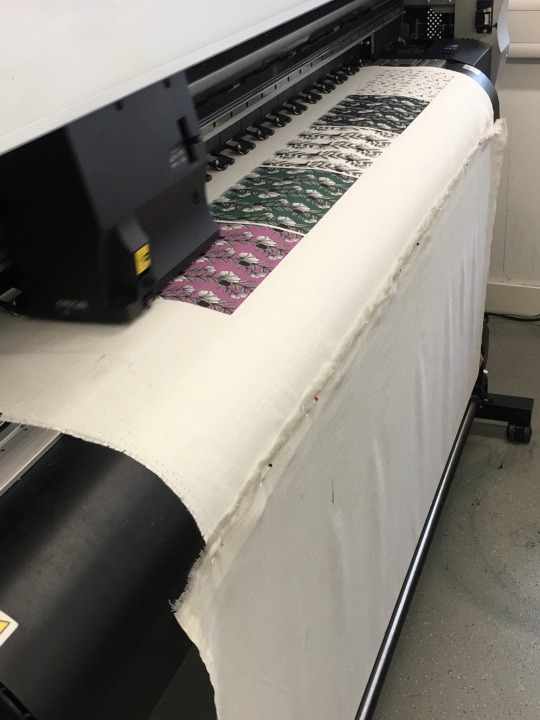
When Sublimation printing I printed my patterns on both a heavy and light weight fabric. I then realised I prefer the outcome on a heavier fabric because they look crisp and easy to handle also the designs were clearer.
By the time I came to using the Pigment Printer I already knew that I wanted to use a heavier weight fabric. I opted for a heavy weight linen which gave my patterns a fresh crisp appearance.
Although I enjoy the Digital Printing method, on my Degree Course, I would love to experiment with other types of print such as screen printing.
0 notes
Text
Evaluation of Patterns

This is the first pattern I created. I think that it is a little too crowded which makes it too busy. When I adjusted the brightness and contrast it changed it a little, but the images still looked very feint. After completing this pattern I decided to try larger spaces in between my motifs, and I resaved all my images which helped when adjusting the brightness and contrast.

Although this pattern is quite crowded it doesn’t appear that way because it is pared down to just images of mushrooms and acorns, and not multiple images as in my first pattern. It is my belief that this is one of my most successful patterns.
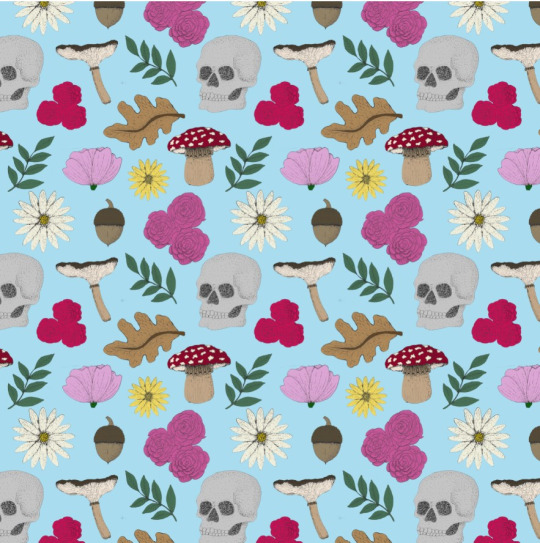
The spacing on this pattern is an improvement on my first one. I think the use of colour helps to give clarity to each image even though the pattern is quite busy. However, although I like the effect that the colours give, the detail within the original illustrations is lost. Also I think my illustrations stand out more in black and white, so this is the only pattern where I coloured in my motifs.

The motifs of this pattern relate closely to the narrative of The Rose Elf. In the original design I had the skull and the daisies as well as the single motif of the bee, jasmine leaf and blackberries. I decided to get rid of them and just have the single motif as a square because it looks cleaner and uncluttered. After making this adjustment I then made it in a chequered pattern by turning the motif diagonally on the tile and then adjusting the angle when turning it into a repeat pattern.

This is not one of my favourites as I don’t believe it relates to my narrative. The lines that the jasmine leaves create are not even and the leaves are unattractive. Also the spacing in between the vines is uneven.

This design was inspired by the previous one which I didn’t like. However I really like this design. The vertical lines flow nicely and the spacing between them is even. Instead of just having the single motif of the jasmine leaf I decided to combine it with other illustrations such as flowers and berries to link the design to the garden imagery in the narrative. This design ended up being one of my favourites and was chosen as one of my final samples.

I think that the spacing in this pattern it is not too cluttered there is room to breathe. It is made up using only two motifs a bumble bee and a daisy. I changed the scale of the daisies to different sizes to make it more visually appealing. I like the design for its simplicity and the way the bumble bee is hidden amongst the flowers.
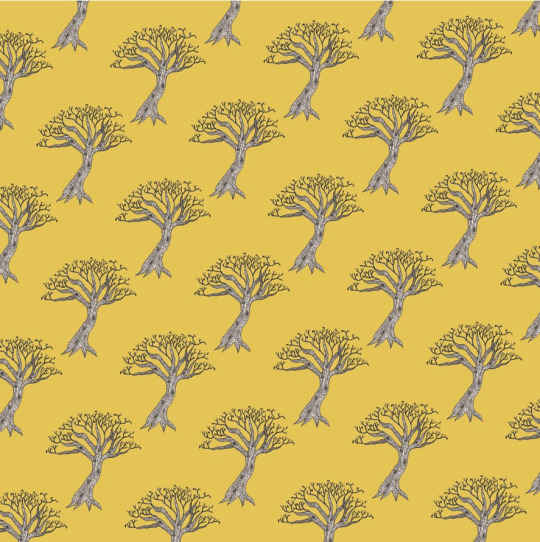
I like this pattern a lot, because the single tree motif repeated makes it look like a forest. Although the pattern looks pretty it does have a sinister quality as the tree has few leaves, a contorted trunk and ominous branches.

With this example I wanted to do a pattern that was mostly flowers. However, I added a nice chunky mushroom to evoke a fairy tale quality in the design. I also added one of my colour illustrations, a favourite of mine, which I wanted to include in one of my patterns. Because of its gentle colours it subtly blended in with the rest of the pattern.

In this pattern I used two of my favourite illustrations, the oak leaf and the acorn, to create a pattern reminiscent of the forest floor in the fairy tale. Again, on the surface this is an attractive pattern but in the context of the fairy tale it has the sinister undertones of hiding the body of the young woman’s lover. I adjusted the angle when creating this pattern to make a seamless repeat.
0 notes
Text
Illustrations
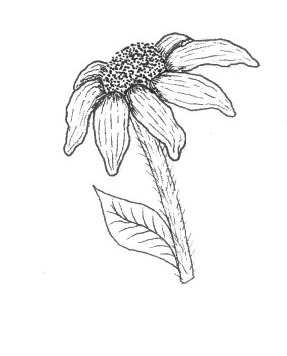
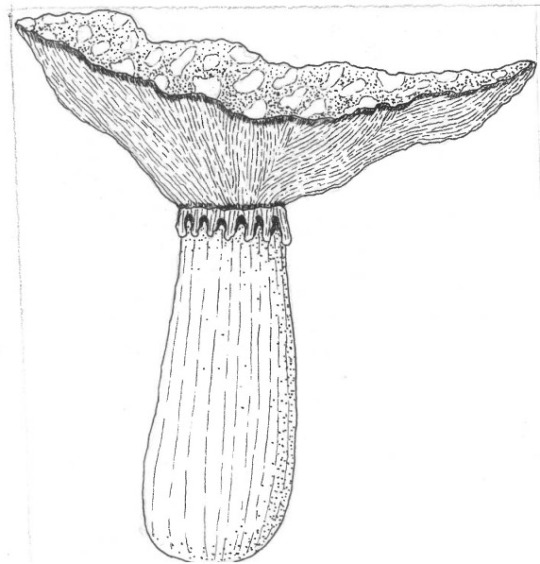



At the start of my project I was using water colours and coloured pens, but the process was slow, and I needed to speed up to keep on track. Therefore, to speed up I stopped using colour and kept to using black and white.
My illustrations look better in black and white rather than colour because the detail is more clearly visible, and you can add a lot of it. Later you can choose whether you want colour or not when working with it in Photoshop.
First, I tried drawing from real life, I drew the leaves that were in front of me but they weren’t good illustrations to use for my patterns although they are workable in my sketch book.
My line drawing technique improved considerably when I started to use good quality fine liners.
I found it less easy to draw from observation, pictures, photos or other sources. However, I was much more successful when I looked very carefully at them to familiarise myself with the object, so I knew what it looked like, and then drawing it on the paper from the memory to produce the essence of it. For example after looking at pictures of acorns I then drew them without the image in front of me, not filling in the details exactly, as from life, but drawing the idea of an acorn and adding lines and dots to develop shading, texture, depth and detail.
I really enjoyed creating my illustrations during this project and I have learned a lot and have improved significantly in my technique. I look forward to improving these skills further in my degree course trying different media such as painting and different mark making tools.

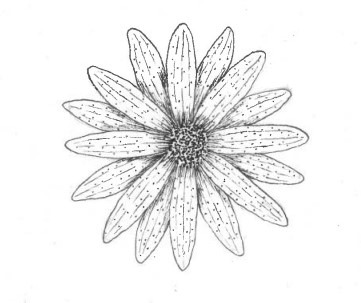
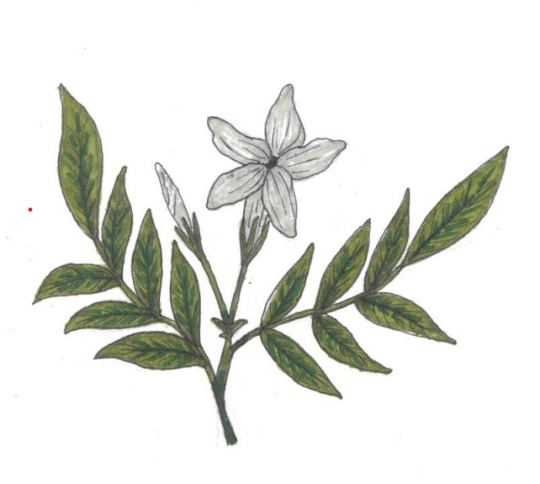
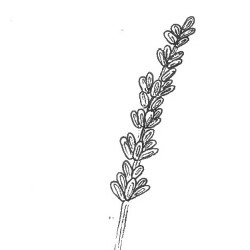

0 notes
Text
Creating a Repeat Pattern in Photoshop

To begin with I started off by getting the pictures I wanted to use onto photoshop, adjusting the brightness and contrast to make the lines more vivid.

Following this, I cut out the shapes. Depending on the image being cut out I either used the Magic Wand tool or the Polygonal Lasso tool. For the majority of these images I used the Lasso.

Next, I used the Rectangular Marquee tool to draw a box around half of my image. Then pressed ctrl x on my keyboard to cut the selected half of the image.

To paste in place I clicked edit, paste special, paste in place,

I then used the arrow keys to move the two halves to the edge of the tile. This means that when the tile is repeated the two sides will match up. It is very important to make sure the two sides stay parallel to each other.

I used this technique to lay out the perimeter of my tile. I found it easiest to arrange the outside before doing the middle because it is a lot easier to adjust the whole images rather than the ones that are in two halves.

I decided to add in some acorns to fill in some of the larger spaces in between the mushrooms.

I tried this design with both a white and turquoise background. To change the background colour I used the Colour Selector to choose my colour then used the Paint Bucket tool to fill in the background layer.

Once I was happy with my design I went to the top of the screen and clicked select and then, all. Then to edit, define pattern, to save it as a pattern.
Next, I opened a new page using the same measurements as the page for my previous tile.

To create the repeat of my pattern I clicked Layer, New file layer, pattern. A box then appeared where I selected my pattern. By changing the scale, I could adjust how big or small my pattern was and how many times it repeats.
0 notes
Text
Walter Crane 1845-1915
Walter Crane was part of the Arts and Crafts movement and, like William Morris he created and designed wallpapers and fabrics of exceptional design. He was a prolific illustrator of fairy tales and children’s books, he was also a fine artist and published papers and two books.
In his book Line & Form, (which is now freely available at www.gutenberg.org), Crane demonstrates the art of drawing different forms and patterns. I was influenced by his Pen Drawing of Fruit, and, Lines of Different Textures, Structures, and Surfaces, also Lines of Characterization in the Form and Feature of Flowers: Lily and Poppy. I created my own line drawing illustrations having been inspired by his work.



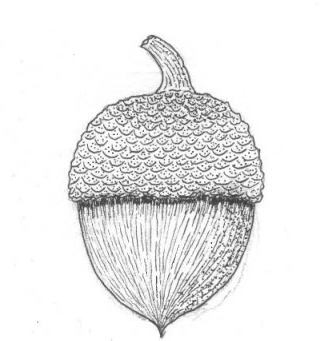

Ilustration from Beauty and the Beast (1875)

Crane is perhaps most famous for his illustrations for fairy tales and children’s books. This illustration for Beauty and the Beast shows his attention to detail and his love of design in the illustration’s wall coverings.
Swan Rush and Iris

The mirror symmetry of the swans, their curved necks and flowing foliage of the bullrushes make a stunning, detailed pattern against the blue background. This was one of Crane’s earliest wallpapers. It has a fairy tale quality reminiscent of Hans Anderson’s The Eleven Swans. (Collections V&A)
Wood Nymph

I really like this wallpaper because it is deep rooted in fairy and folk tales with its mythical creatures deep in a forest. I like the shape of the leaves and the black background that gives it depth
Cream Roses on Duck Egg

Although there are vicious thorns on the rose briars they are softened by their sepia tones which are also used to outline the petals of the roses, and the absence of black further softens the pattern. My rose illustration used in many of my samples was influenced by this print. (Loome Fine Furnishing Fabrics)
Researching and studying Crane’s designs, illustrations and line drawings has been a key element in helping me to interpret my narrative into line drawings, and then create patterns for my print samples because he incorporates a fairy tale quality in much of his work which is what I want to achieve in my own work.

1 note
·
View note
Text
Gustave Doré 1832 – 1883
Gustave Doré was an extremely talented illustrator and artist who illustrated for Charles Perrault and other authors of fairy tales in the latter part of the 19th Century. Among other works, he also illustrated Dante’s Inferno and parts of the bible.
A lot of his work was created by making finely detailed woodcuts such as the example below.

This is an illustration from Dante’s Inferno, Canto 1 of The Divine Comedy (1861)
The details of the foliage in the trees, the textured bark, the twisting, creeping vines, the ghostly lines of the trees in the background and the contrast of light and dark give a very atmospheric background for the lone, central, highlighted figure.
Doré’s fairy tale illustrations have sinister overtones. For example,


Le Petit Poucet, L’Ogre et ses Enfents (1869)
The above illustrations are from ‘Le Petit Poucet, L’Ogre et ses Enfents’ or ‘Hop o’ my Thumb’ a story where an ogre wants to kill and eat Tom and his six brothers. Tom tricks him and the ogre kills his daughters by mistake, a gruesome tale, but in the end Tom steals the ogre’s magic, seven league boots and goes off to make his fortune.
brothers. Tom tricks him and the ogre kills his daughters by mistake, a gruesome tale, but in the end Tom steals the ogre’s magic, seven league boots and goes off to make his fortune.
Another very disturbing illustration is that of Le petit Chaperon Rouge (1869);

It is full of wonderful detail, the folds of the bedclothes and curtains, the huge frilled night-cap, the vicious claws resting gently on the bed and the expressive faces of the wolf and the girl. The shadow on the pillow shows the dark image of a wolf’s ear.

Doré also created atmospheric scenes and character studies; This scene, London Embankment (1872) Is reminiscent of Timorous Beasties Glasgow Toile with disreputable figures depicted in the scene.

The Fly Paper Merchant (1872) a wood engraving, is an amazing character study with his hat covered in fly papers, covered in flies showing the efficiency of his fly papers. Doré’s use of fine lines and crosshatching create depth and beautiful detail in his work. The careful, meticulous lines he draws are something I want to develop in my own drawings to give an impression of the woodcut images often seen in illustrations depicting scenes in fairy tales.

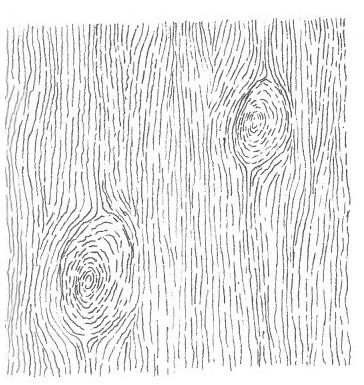
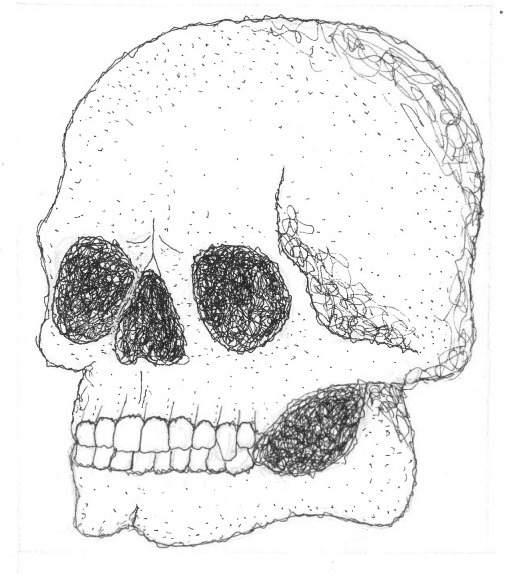

0 notes
Text
Ernst Haeckel
Born in Germany Ernst Haeckel was, amongst his many credentials, a zoologist and artist who discovered, described, and named thousands of new species.
His published art works include more than one hundred detailed and multi-coloured illustrations of sea creatures and animals. (Wikipedia)
Haeckel’s drawings of the different species he discovered are very detailed and ‘botanical’ in their presentation. I like the way he uses shading to create a sharp contrast of dark and light which focuses our attention on each strange ‘creature’ and the symmetry of the layout in the two works below, Mycetozoa and Basimycetes.


When doing my mushroom drawings I took inspiration from these illustrations because they look very real and chunky and, although they are not in fact mushrooms they look like mushrooms with frilly collars on the stalks and other relevant details.
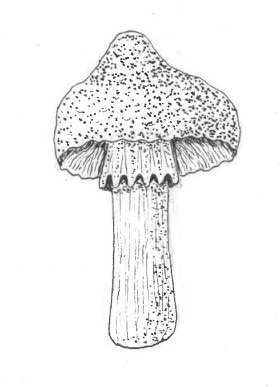


0 notes
Text
Michael Angove
“His work embodies his fascination of flora and fauna and the complexities of the natural world; not just the beauty of flowers but the insects and bugs as well – the dark side.” (Michael Angove Design)
Michael Angove is a truly spectacular designer who works meticulously to create his detailed designs. One of his ways of working is to gather samples from his garden, deconstruct them, each petal and leaf, and then scan or photograph them ready to manipulate the images on screen. The outcome is a reconstructed build-up of images overflowing with an abundance of nature.
His aim is to build a “re-appreciation of nature” and “the hidden details and beauty of the unusual”.( Michael Angove .com)
I find Michael Angove’s work inspiring in his representations of nature with bugs hidden and obvious within his designs. His designs have to be looked at in detail to really see what is there . His, Welsh Daffodils – Green, has an abundance of bees, butterflies and birds amongst the daffodils and narcissi.

Here he has collaborated with Surface View, Angove’s designs can be accessed in different scales and printed onto a selection of items such as, murals, window film, roller blinds and tiles, making it bespoke and personal for the customer.
0 notes
Text
Cole & Son
Cole & Son was first founded in 1875 by John Perry. Perry built up the wallpaper business developing high quality block printed designs. Later, in 1941 the business was purchased by A. P. Cole. With the purchase Cole became the owner of, ‘the largest archive of historical printing block designs in the country’, spanning across more than a century encompassing, ‘thousands of designs and hundreds of collections’. (Wood, B 2014)

Whimsical, Secret Garden
I like the way they put the separate motifs together to create a garden scene with unexpected nautical elements hidden within the pattern. Having the unexpected hidden details is something I want to achieve in my own work.

Botanical – Botanica , Forest
Cole & Son explain that “It’s no wonder that Silvan forests feature so heavily throughout literature and folklore; the sense of being wholly enveloped upon stepping into an array of trees and undergrowth as far and wide as the eye can see creates an awe-inspiring feeling.”
It reminds me of the forest described in the Rose Elf fairy tale, so I used my own tree drawing to create a forest print. Because I only had the one tree illustration it doesn’t create the same
0 notes
Text
Timorous Beasties – Alistair McAuley and Paul Simmonds
McAuley and Simmonds met and became friends while studying textile design at the Glasgow School of Art. Together they established their firm, Timorous Beasties, in 1990 and it has gone from strength to strength, winning many awards and they are ‘internationally acclaimed’.
They are unique and innovative, and their designs have been commissioned by such famous brands as Fortnum & Mason, Nike, Johnny Walker Whisky, and hat designer Philip Treacy. They also list other famous clients on their website.
(https://www.timorousbeasties.com/about/profile)
Much of their fabric, wallpaper and cushion designs are hand printed using silk screen. Paul Simmonds explains that Timorous Besties see the whole process through from the innovation of a new design, to the manufacture of the product - to it being sold in their outlet via large displays which the customer can order from. This also prevents wastage of materials through over production.
Timorous Beasties wallpaper and fabric are expensive to buy, but as Simmonds points out, ‘production can be quite small, sometimes only four rolls of wallpaper can be produced in a day’ . This makes the profit margin much lower than that of other good quality wallpapers and fabrics that are mass produced.
Their illustrations and motifs are unique, unusual and out of the ordinary in comparison to the conventional designs of textiles and wallpapers.
(Timorous Beasties 2013 youtube.com)
Artist Dinos Chapman explains that Simmonds and McAuley are “not trying to make art and they are not denying it’s design, but they are a little bit more interested in how far you can push design.”
Timorous Beasties on BBC Artworks 2018
I particularly like the style of the hand drawn illustrations; the fine details and lines give a depth and texture which is clearly translated into the final product.
Having been born and raised in and around Glasgow, I find the Glasgow Toile fascinating. The design is so clever, beautiful on the surface but there is grotesqueness in the smaller details such as a junkie shooting up and a man peeing up a tree showing the darker side of the city.
There is a subtle hidden narrative behind the print which is something I want to achieve in my own work, having it look nice on the surface but having sinister motifs throughout.






0 notes
Text
Creative Weaving in the Woods




In this module I wanted to try creative weaving using tree branches as a natural frame. With this in mind I went to Burbage Common Woods, a place I love to go walking in, to seek out a suitable work space. After a short search I found a partially fallen branch entwined with ivy.
I started off my creative weave by wrapping string around the V of the branch to create the warp and then used long colourful strips of off cuts and old scarves to weave the weft.
Before this I laid the strips over the branch to determine what order they would be in so as to be ready to weave. As I finished weaving one strip I would knot the next strip onto it to carry on the weave.
As a finishing touch I used a dead vine I found on the woodland floor, that had twisted round itself, to create a border for the exposed edge and decorated all of the borders with leaves and flowers.
I wanted the weave to be a little piece of magic amidst the natural colours of the wood, a pop of colour to represent the hidden presence of fairies in nature.
I really loved the finished outcome of my weave, its shape, colours and placement within the woods. If I was to do the weave again I would like to make it larger and higher up the tree to make it look part of the scene even though it would be contradictory to its surroundings.

0 notes
Text
Synopsis of The Rose Elf by Hans Christian Anderson
The protagonist of the fairy tale is the Rose Elf who is a tiny being who lives in a rose within a beautiful garden. One day he comes across two despondent lovers reluctantly saying goodbye to each other. The girl’s brother was sending her lover on a journey far away. The Rose Elf had inadvertently crept into the rose she had given to him and set off on the journey with the young man.
Reaching some dark woods the young man was set upon by the girl’s wicked brother and was stabbed to death and beheaded. The brother buries him in the wood and scatters withered leaves over his grave.
The elf witnessed the murder and hid in a withered leaf that landed on the murderer’s hair. On his return he leans gloatingly over his sister’s sleeping body and the leaf falls onto her bed. The elf came out of the leaf “and sliding into the ear of the sleeping girl told her, as if it were a dream, of the terrible murder of her lover; he showed the place where her brother had buried the body [ ] and said, “in token of what I have told you is not a dream, when you awake you will find a withered leaf on your bed.”
When night came she went to find the grave of her lover and dug him up, wept and prayed to die. She cut a lock of his hair and a bough of jasmine that grew nearby. Returning home she placed the hair in the base of a large bowl and planted the jasmine over it.
Flying back to his rose home the elf finds it fading away; “Alas! everything that is good and beautiful so quickly passes away,” he said.
As the days pass the elf sees the girl weeping over her jasmine, as it grows and blooms she grew weaker and eventually died in her sleep leaning over the jasmine.
The brother then takes the jasmine and places it beside his bed, the elf tells each tiny flower spirit living inside the jasmine flowers of the murdered lover. While the wicked brother slept they flew out of their flowers each with a poisoned arrow. “First they crept into his ears, making him dream of his horrible deed, and then flew through his lips and stabbed him in the tongue with their poisoned shafts.” “Now we have avenged the dead lovers,” they returned to their flowers.
Not realising the jasmine spirits were taking their revenge, the elf had also told his tale to the Queen Bee, she arrived with her swarm, intent on stinging him to death, only to find the wicked brother already dead they flew round the jasmine tree to show their approval. When the body was discovered one of the people round the bed picked up the pot holding the jasmine and was stung on his hand by one of the bees. The pot shattered to reveal the lover’s hair and it was realised that the wicked brother was a murderer.
In this version of the fairy tale the girl takes a lock of her lover’s hair, however, in what seems to be the original and other versions I have sourced she takes his skull which does make more sense. The above version has perhaps been watered down for younger children. It makes more sense for the lover’s skull to be hidden in a bowl than a lock of hair which would be hard to identify as that belonging to the lover, whereas having the skull would automatically point to murder.


0 notes
Text
Story Telling - Fairy Tale and Folklore
Story telling is universal and before people were literate the telling of stories and passing them on by word of mouth was how people were entertained and informed of their cultural traditions and values.
Ireland has a strong tradition of story telling with an abundance of legends, folk and fairy tales. They even had traditional keepers of story who were called the Seanchai. They not only recited ancient tales and legends but also recent events and news as they travelled from village to village. (National Geographic Society, 2020)
Using new scientific methods it is now believed that some fairy and folk tales have been around for thousands of years. Researchers at Durham and Lisbon universities claim that some fairy tales can be traced back four thousand years and more.
‘Durham University anthropologist Dr Jamie Tehrani, said Jack and the Beanstalk was rooted in a group of stories classified as The Boy Who Stole Ogre's Treasure, and could be traced back to when Eastern and Western Indo-European languages split more than 5,000 years ago. (BBC News, 2016))
Isabel Hernandez’ article in the National Geographic History Magazine (24/09/2019), explains that, ‘The world's most famous collection of children's stories began as an academic study for adults, when Jacob and Wilhelm Grimm collected German folklore in the 1800s’. She also points out that the same tale occurs in different cultures with the same story line but different aspects such as, in Egypt Cinderella’s shoes are made of red leather and in an early Grimm’s brothers’ version the slipper is made of gold. (National Geographic History magazine, 2019)
I enjoy the feeling of community in storytelling. Each culture has its own collection of stories and, even though aspects of the stories vary from place to place, the storylines have great similarity. Therefore, everyone knows these shared tales, and this creates a shared experience across humanity.

0 notes
Text
Brief
Hidden in Plain Sight
Aim of my Project
The Aim of my project is to explore the duality of themes such as light and dark, good and evil and life and death in, The Rose Elf, a fairy tale by Hans Christian Anderson. To this end I will create a range of fabrics/wallpaper that reflect the duality of themes in this tale
My Brief
The magical landscapes of my childhood in Scotland such as the Fairy Pools, and Fairy Glen on the Isle of Skye inspired a great interest in Folk, Fairy tales and Fantasy. They have other worldliness and yet with Fairy and Folk tales, somewhere in the past they must have been based on some truth our ancestors experienced and passed on by word of mouth.
Researching different tales for my project I came across a copy of Hans Anderson’s Best Fairy Tales which first belonged to my Great-great Aunty Gwen. A book published in 1945/6 on War Economy Standard paper.
At first The Rose Elf seems like an innocuous tale but in amongst the delicate and beautiful imagery there is a dark and sinister story.
Objectives
• To research different wallpaper and fabric houses to gain inspiration, insight and understanding of the creative process.
• To research relevant illustrators and artists to understand and learn from their style and creativity to inform my own work.
• To create illustrations to develop into patterns for printing
• To further develop my skills using Photoshop to create repeating patterns.
• To create a range of printed samples that reflect the narrative of The Rose Elf.
0 notes